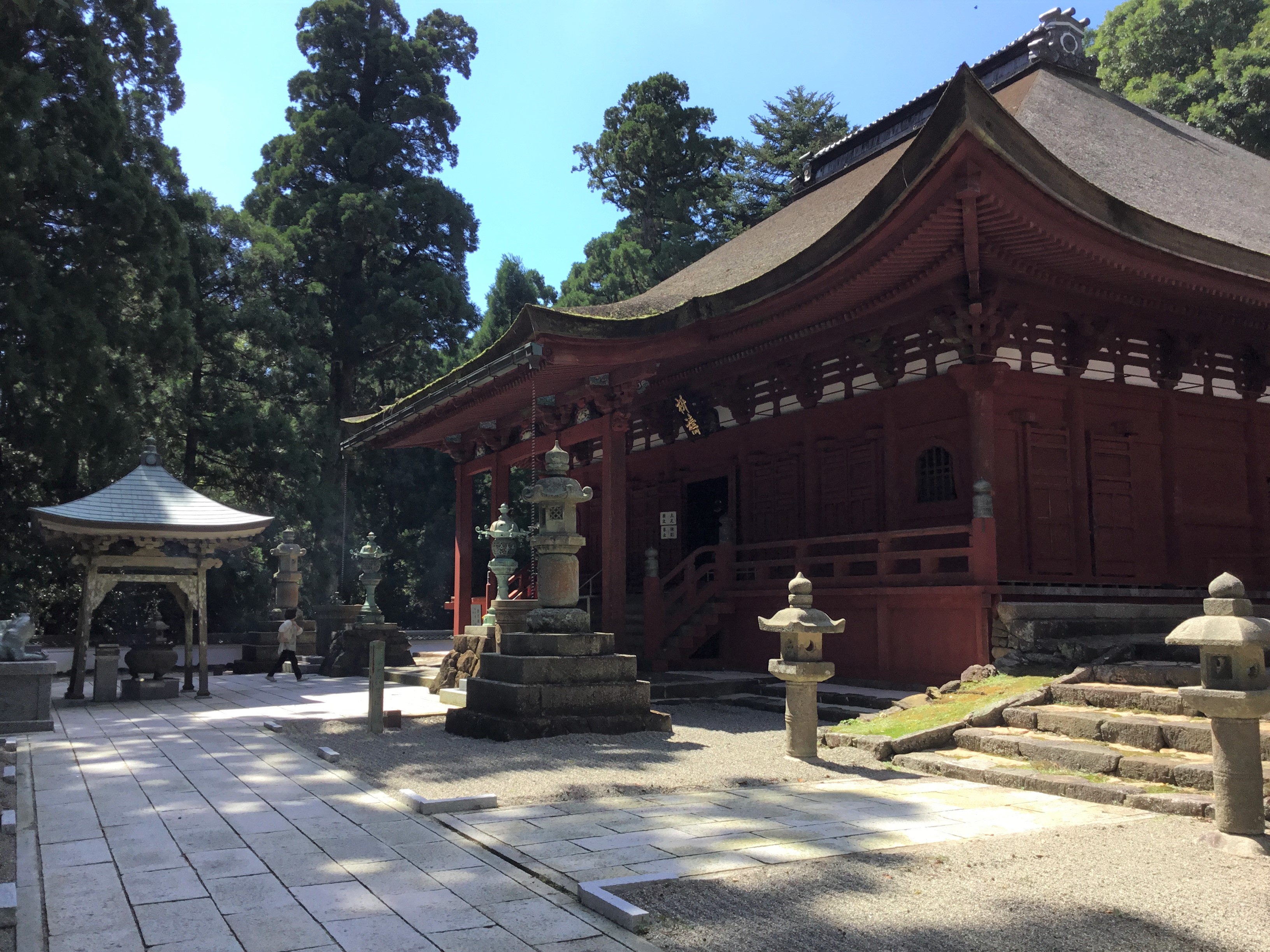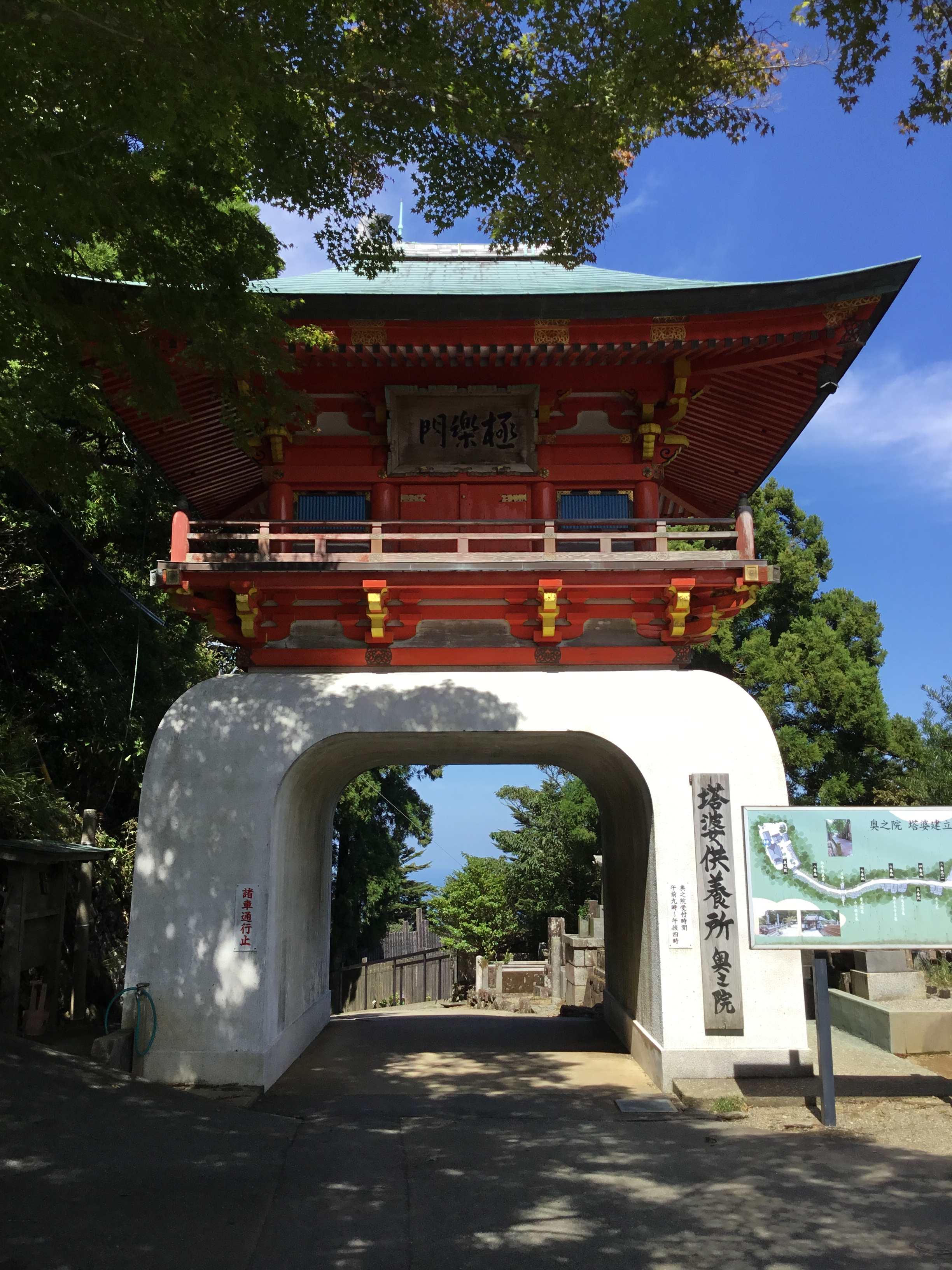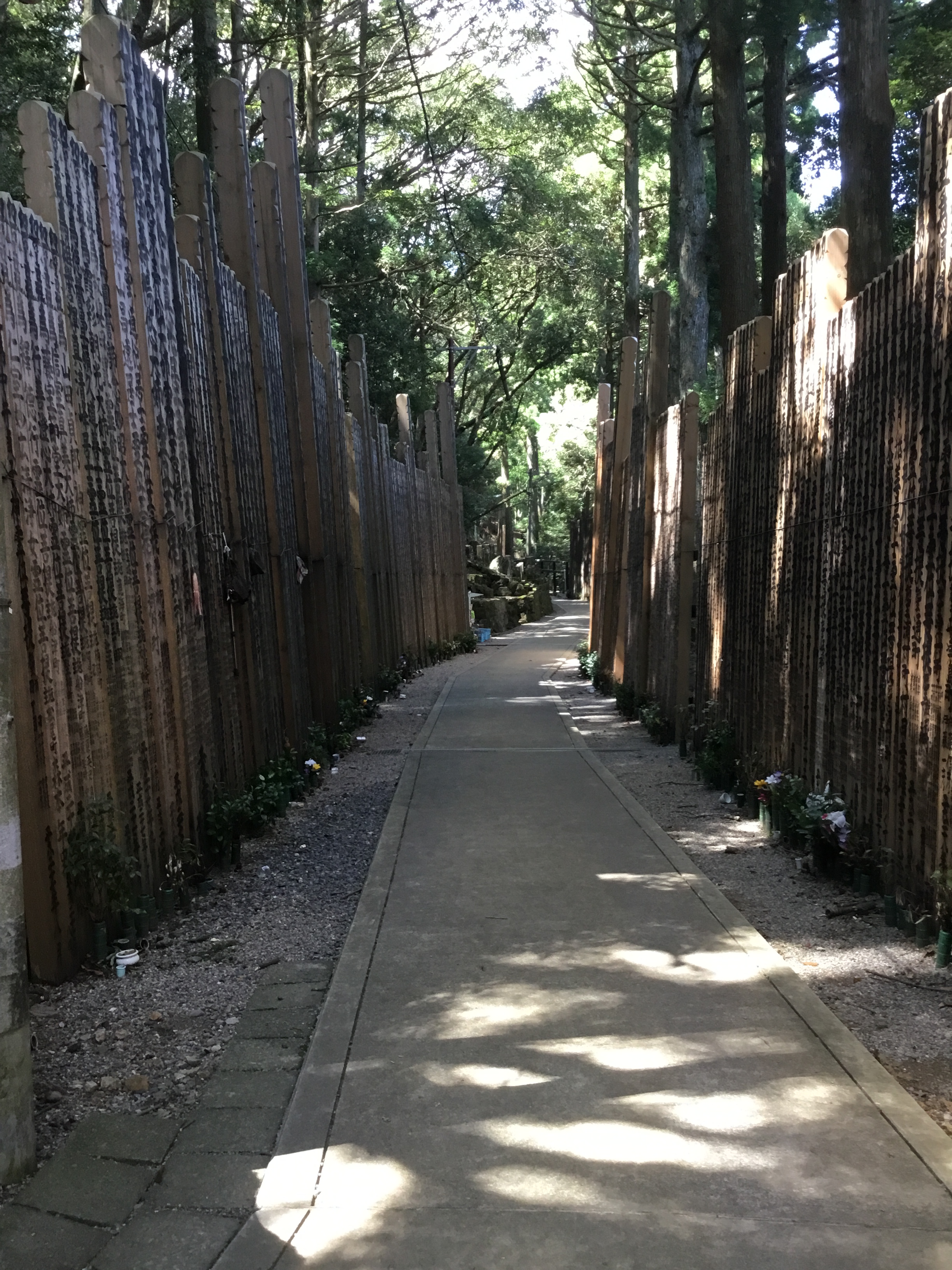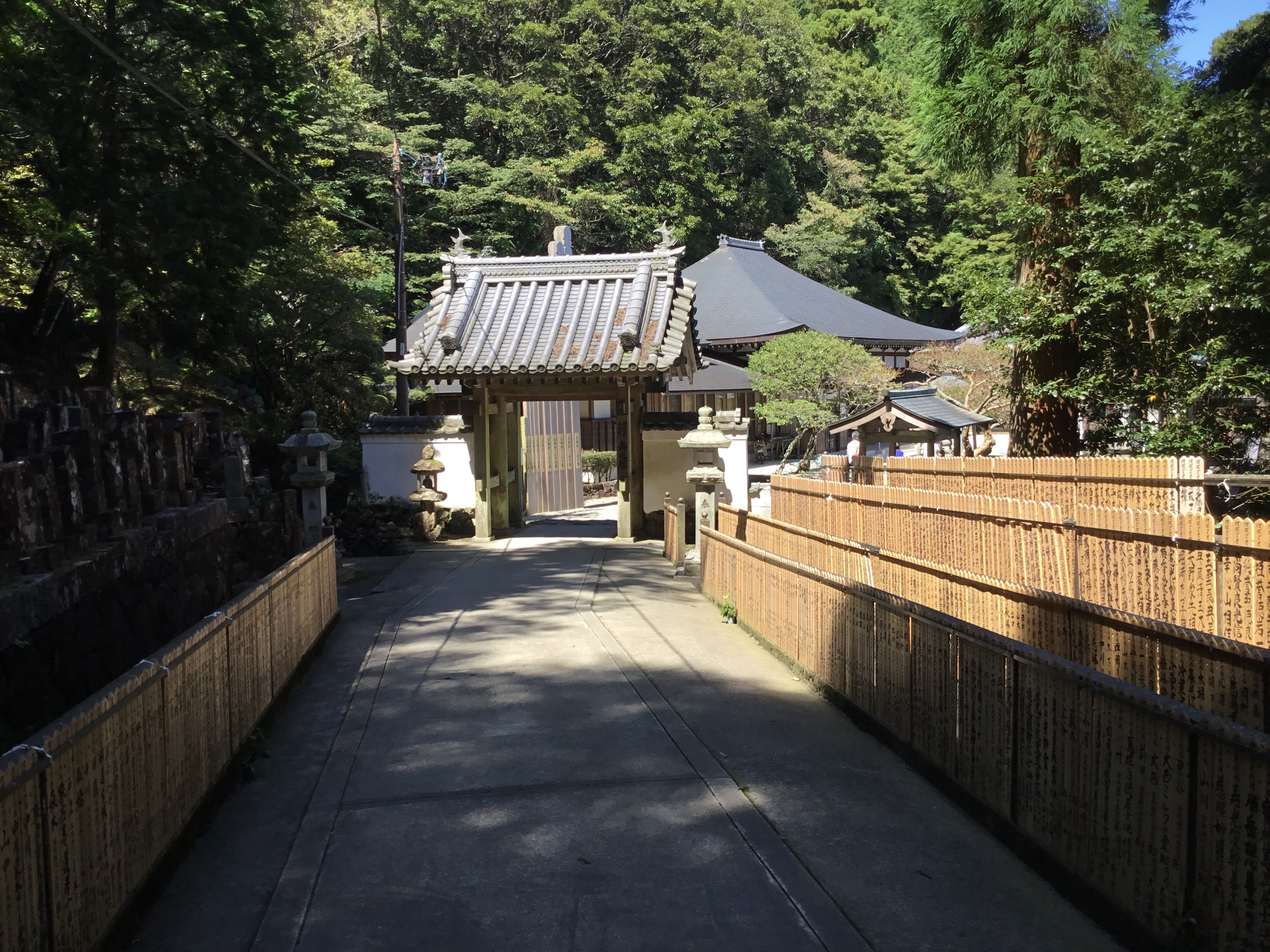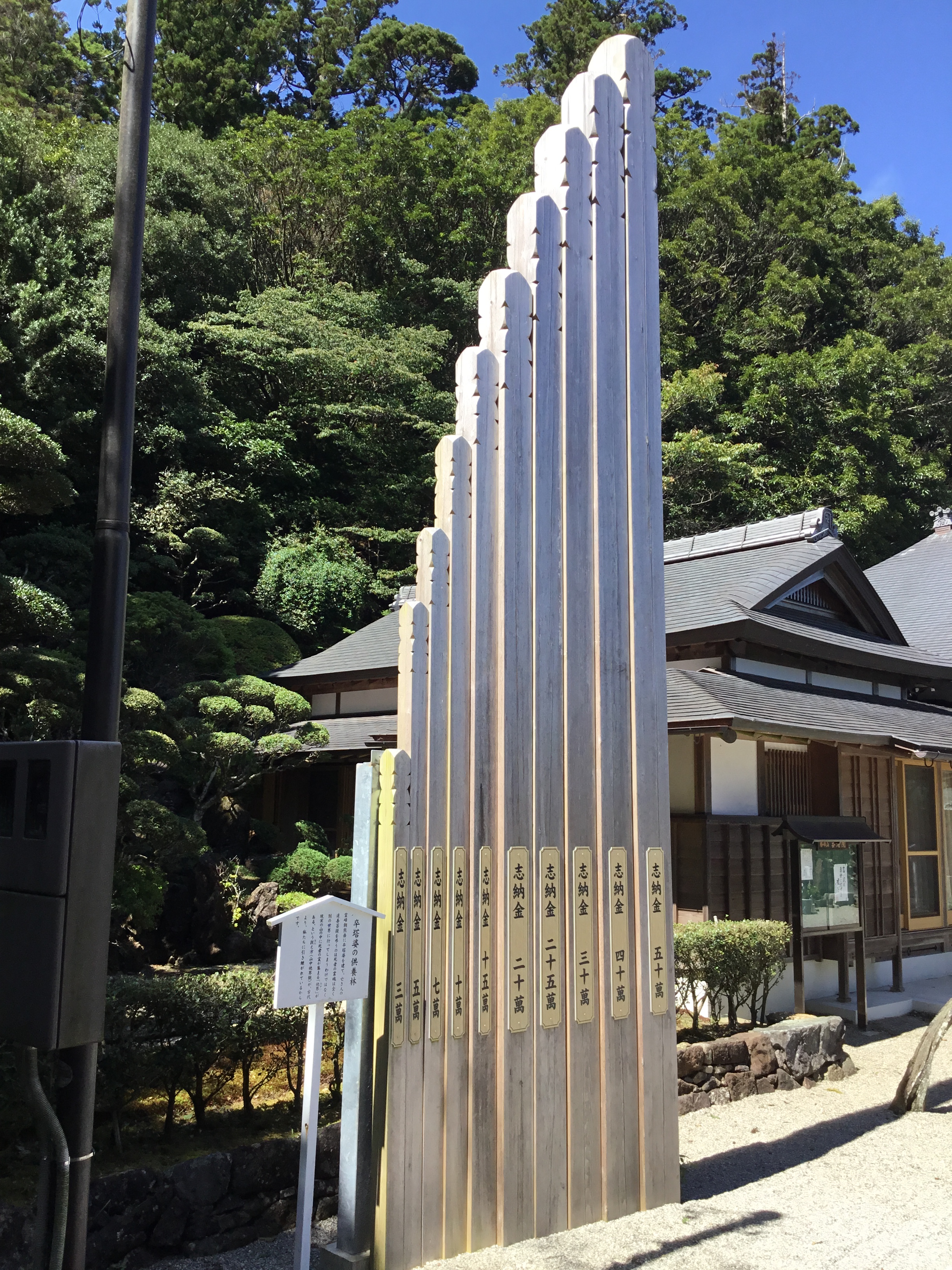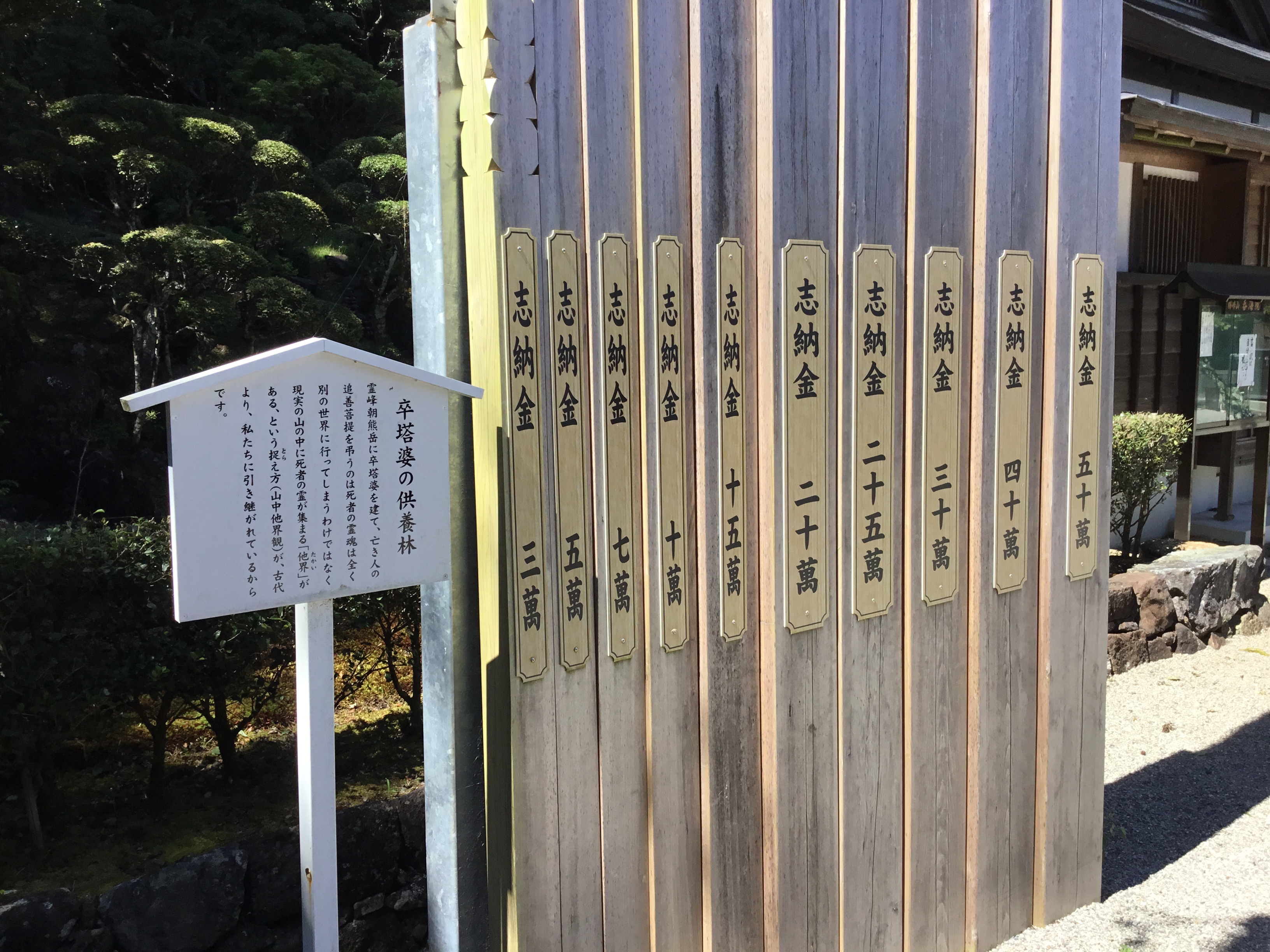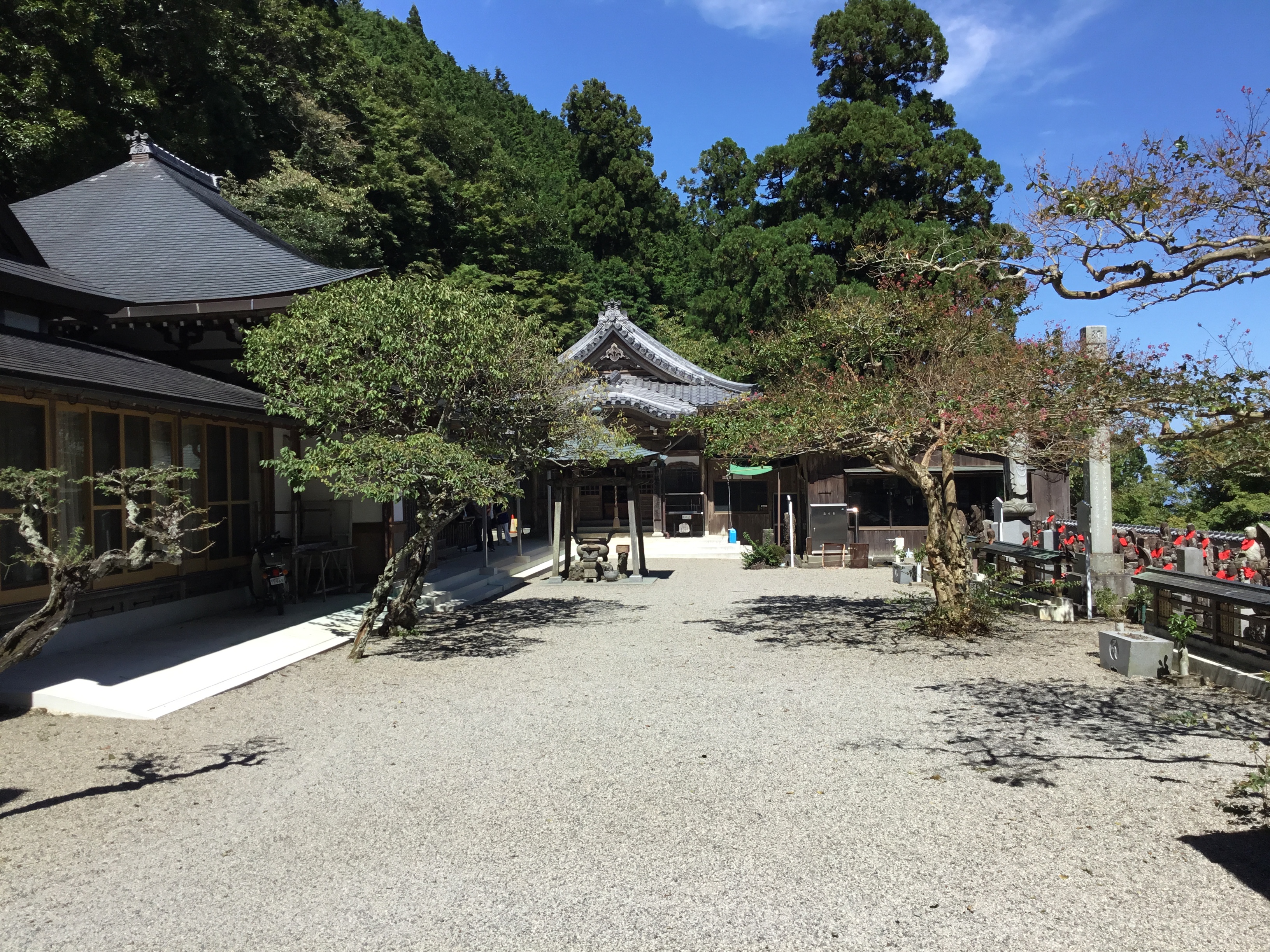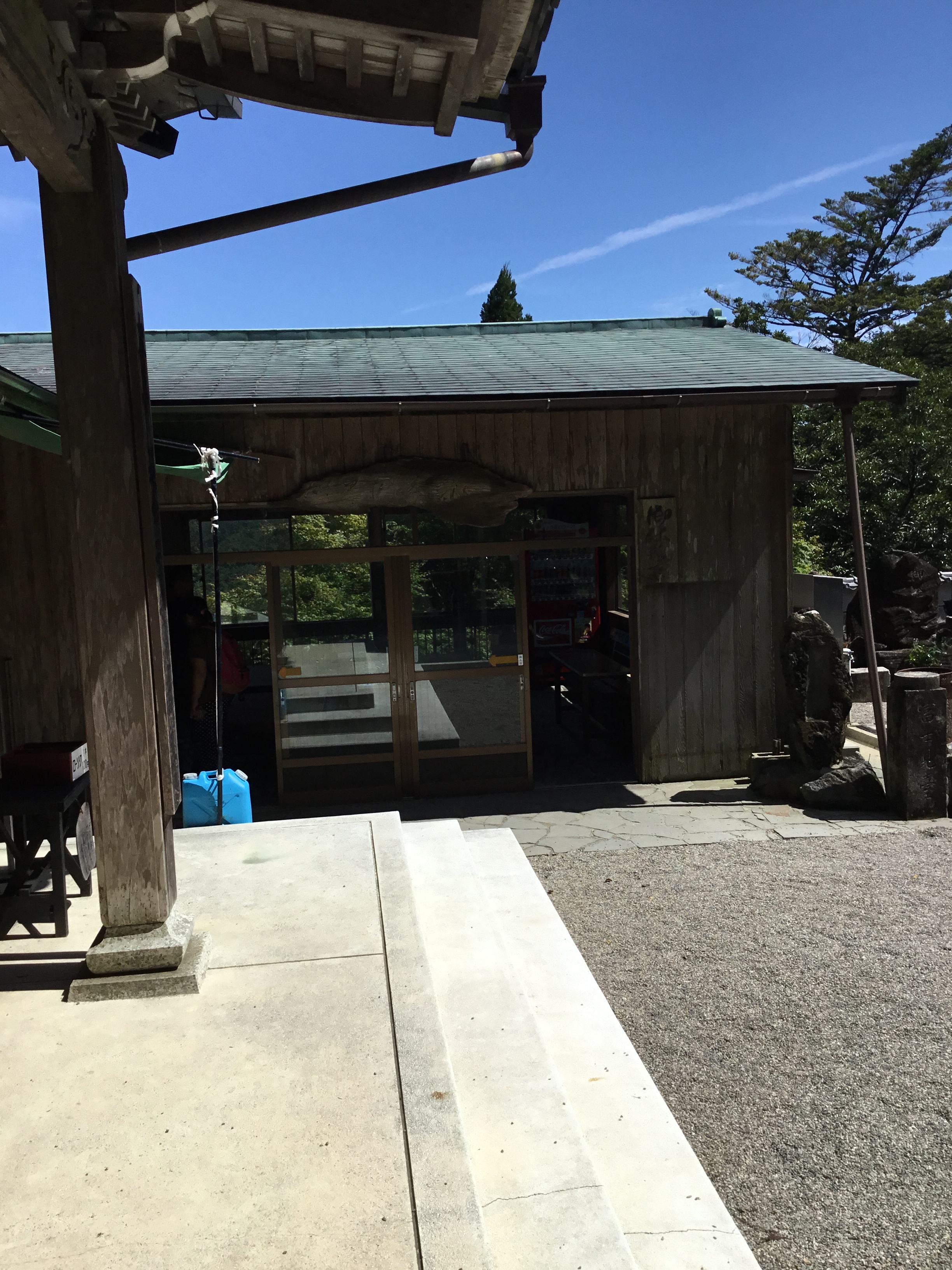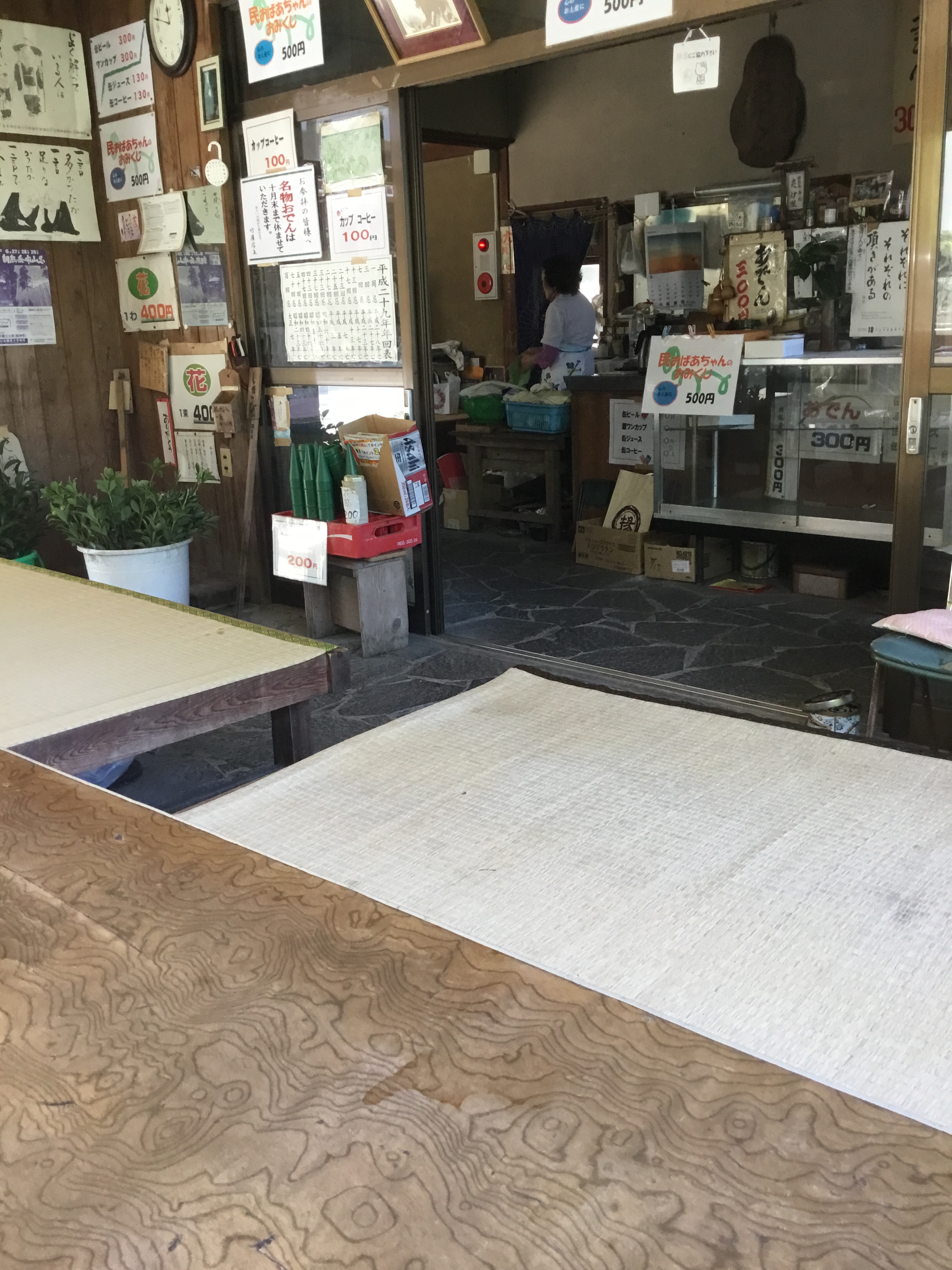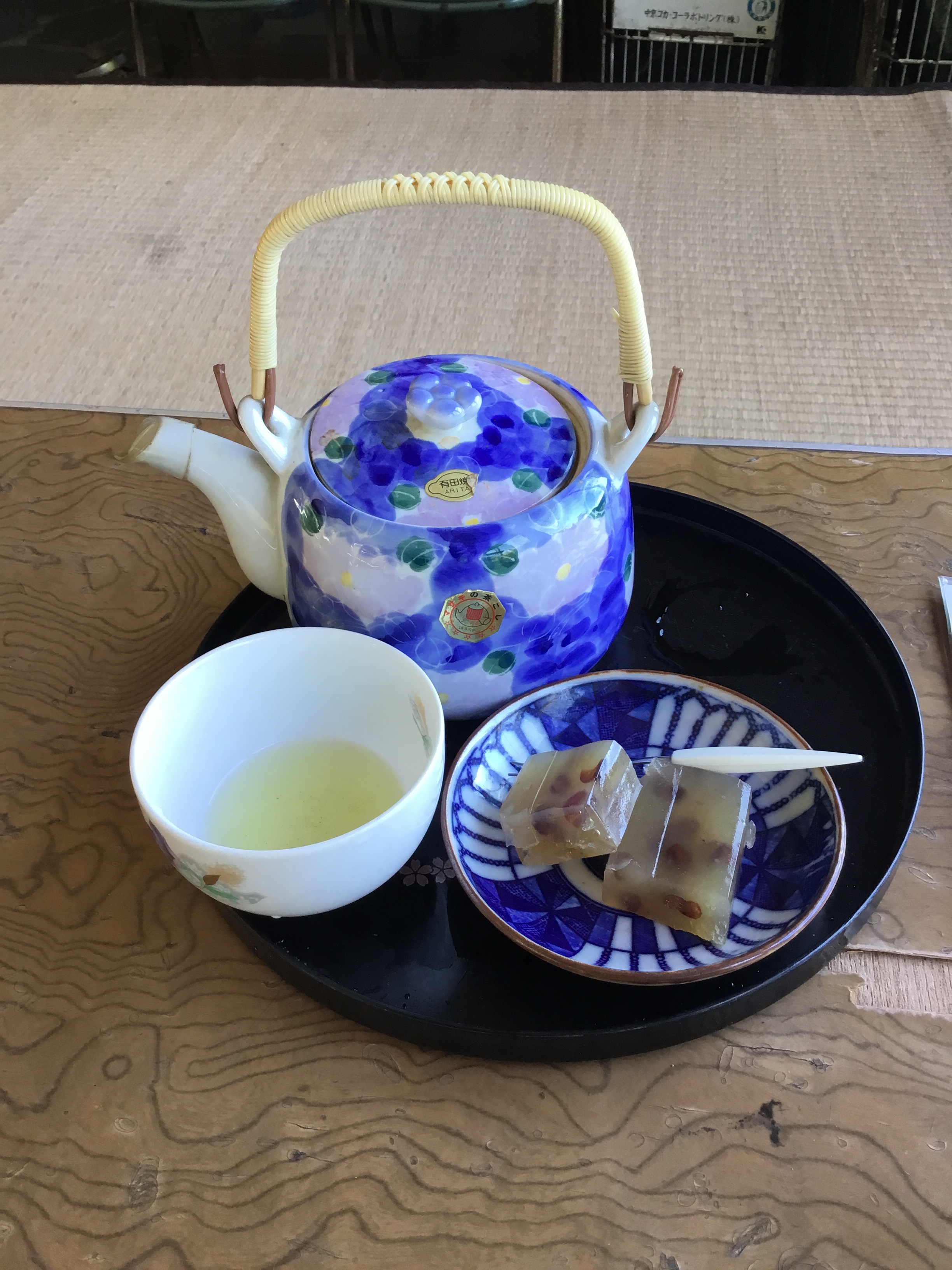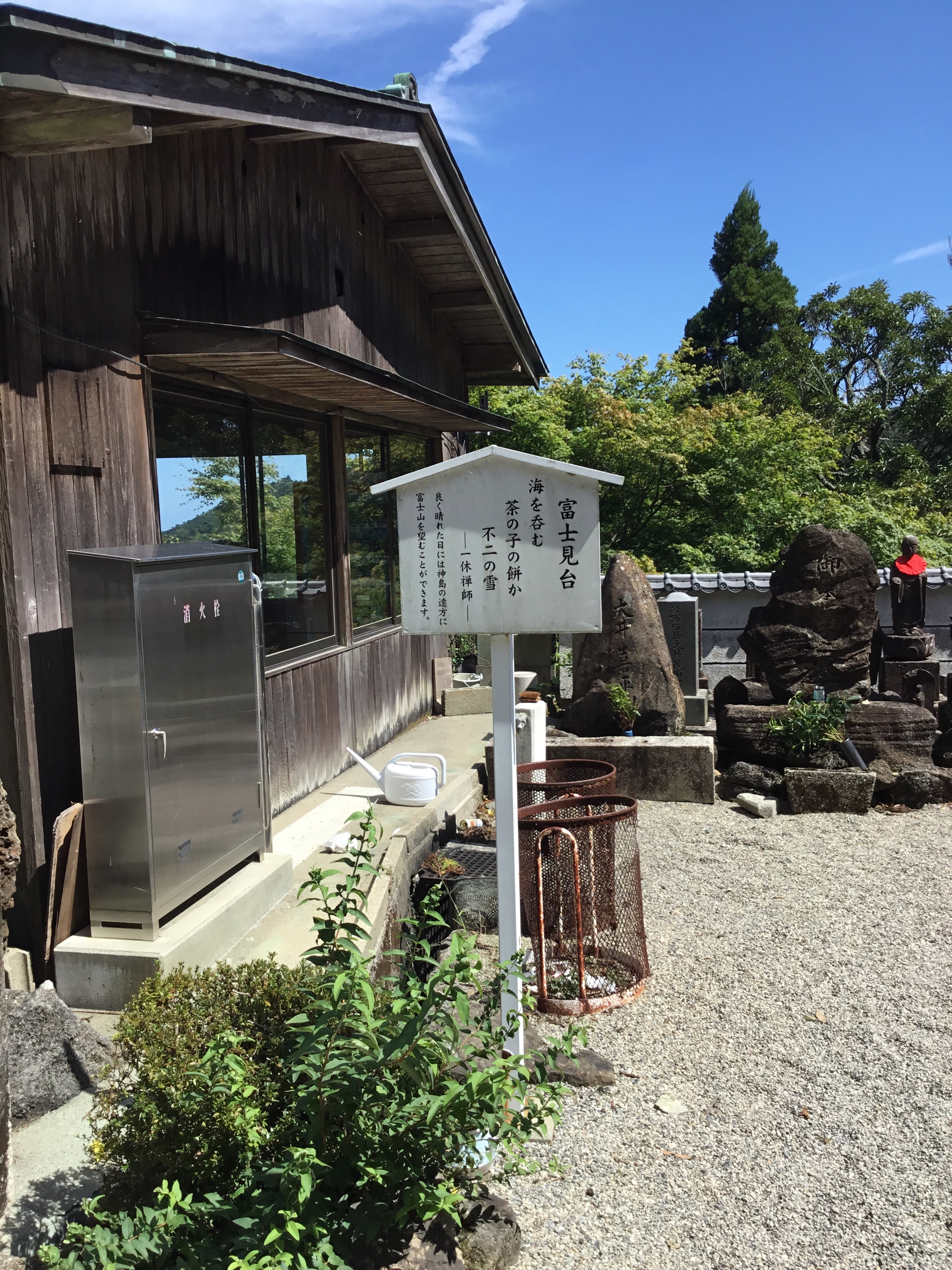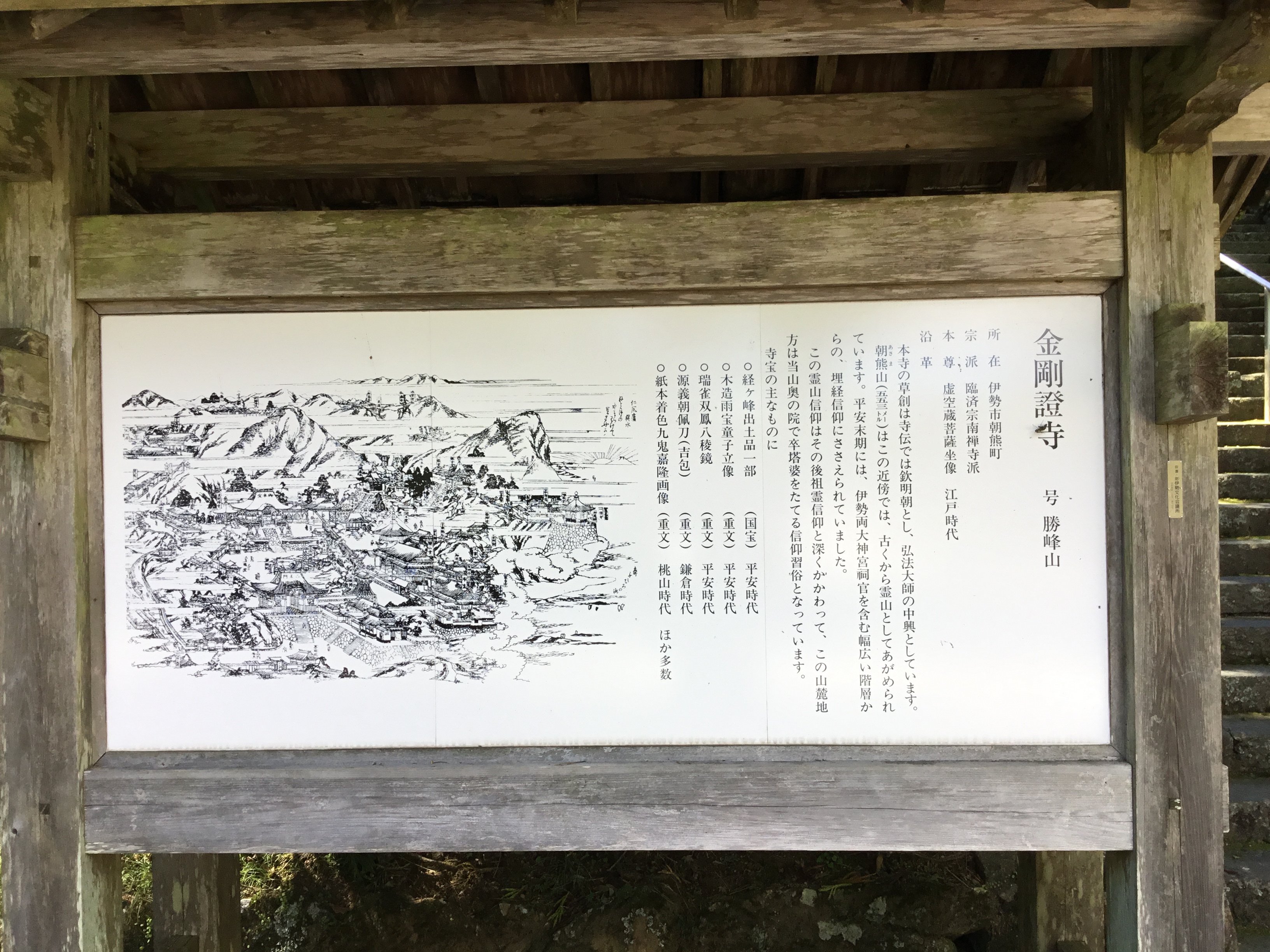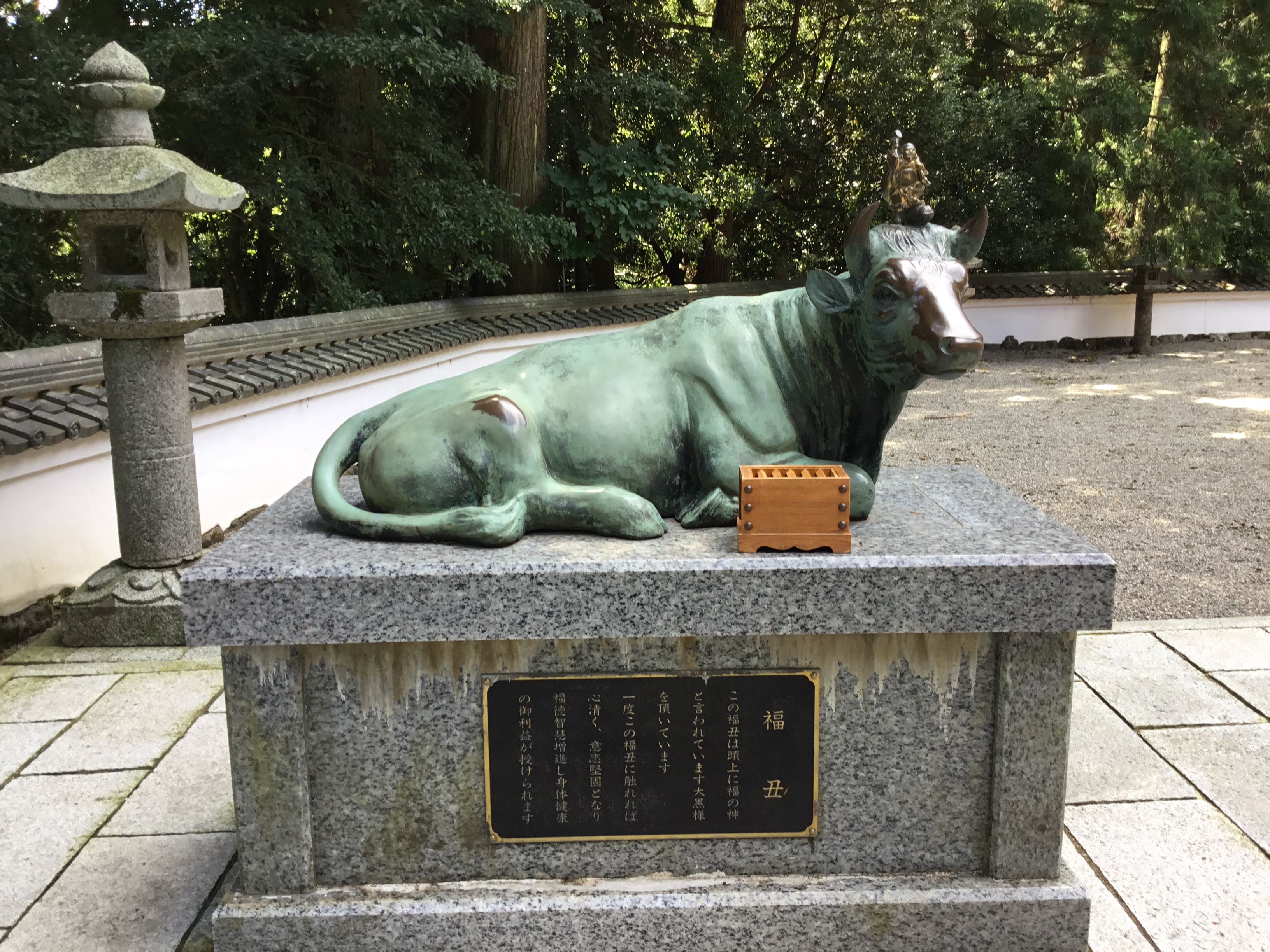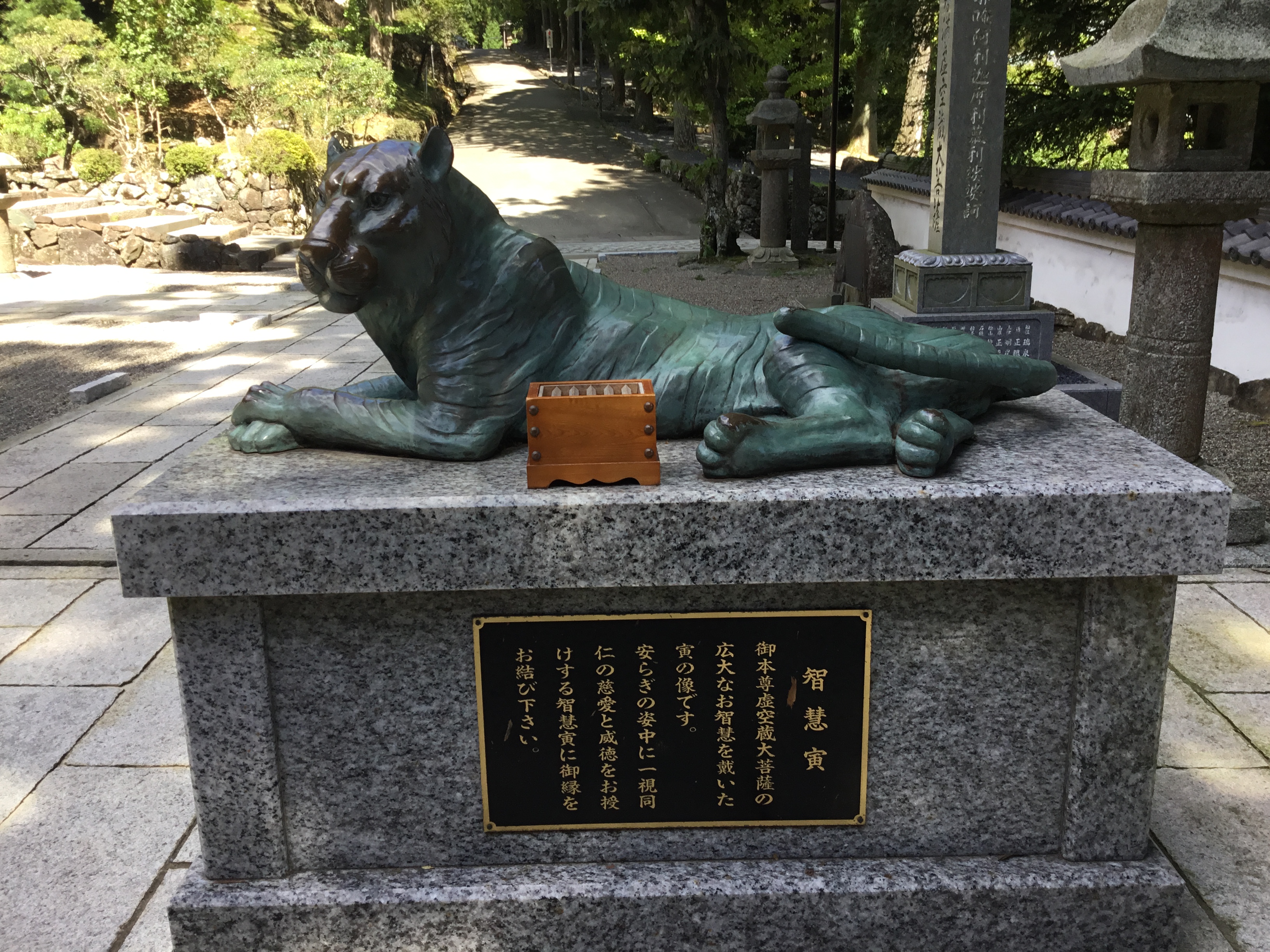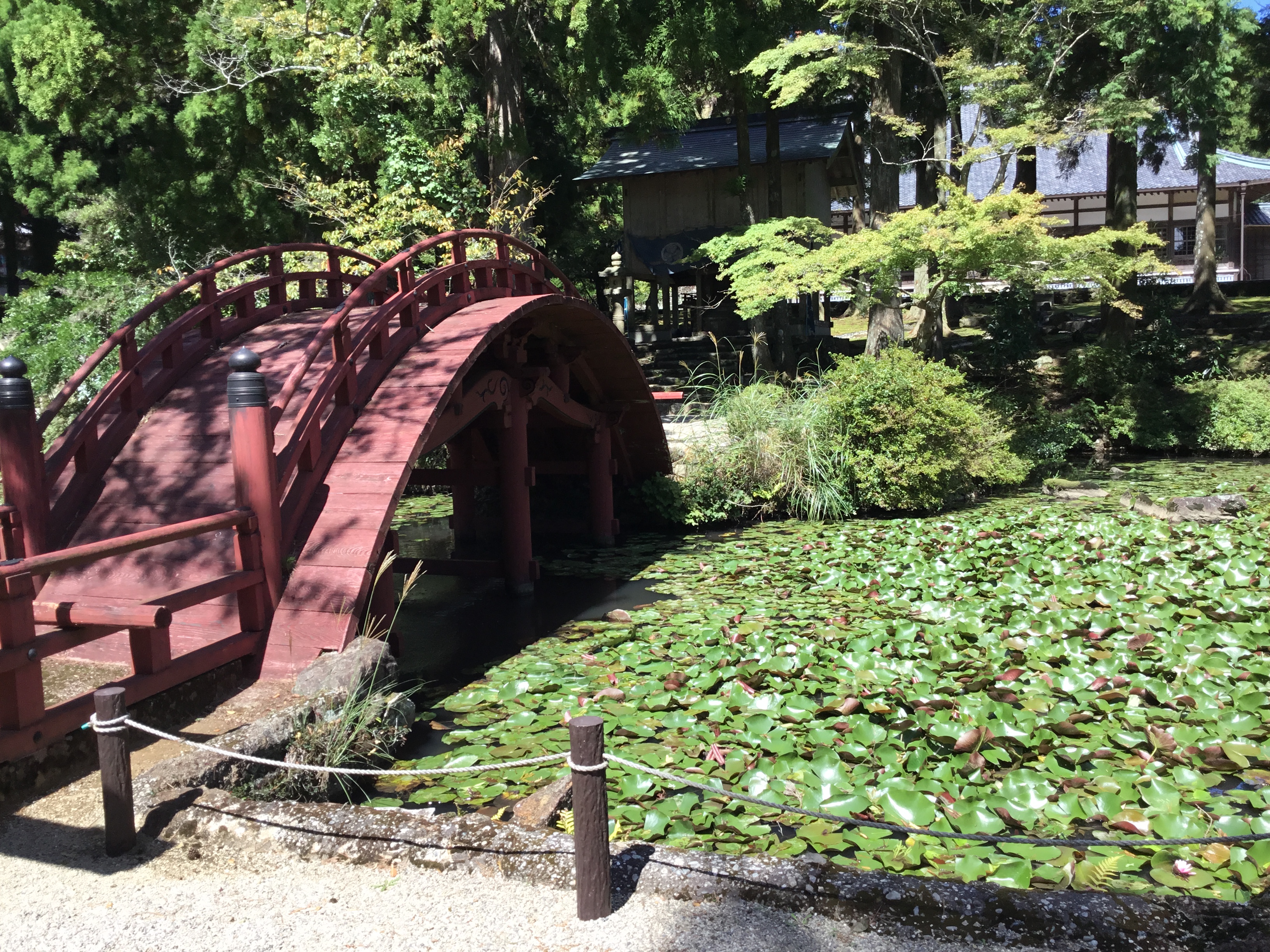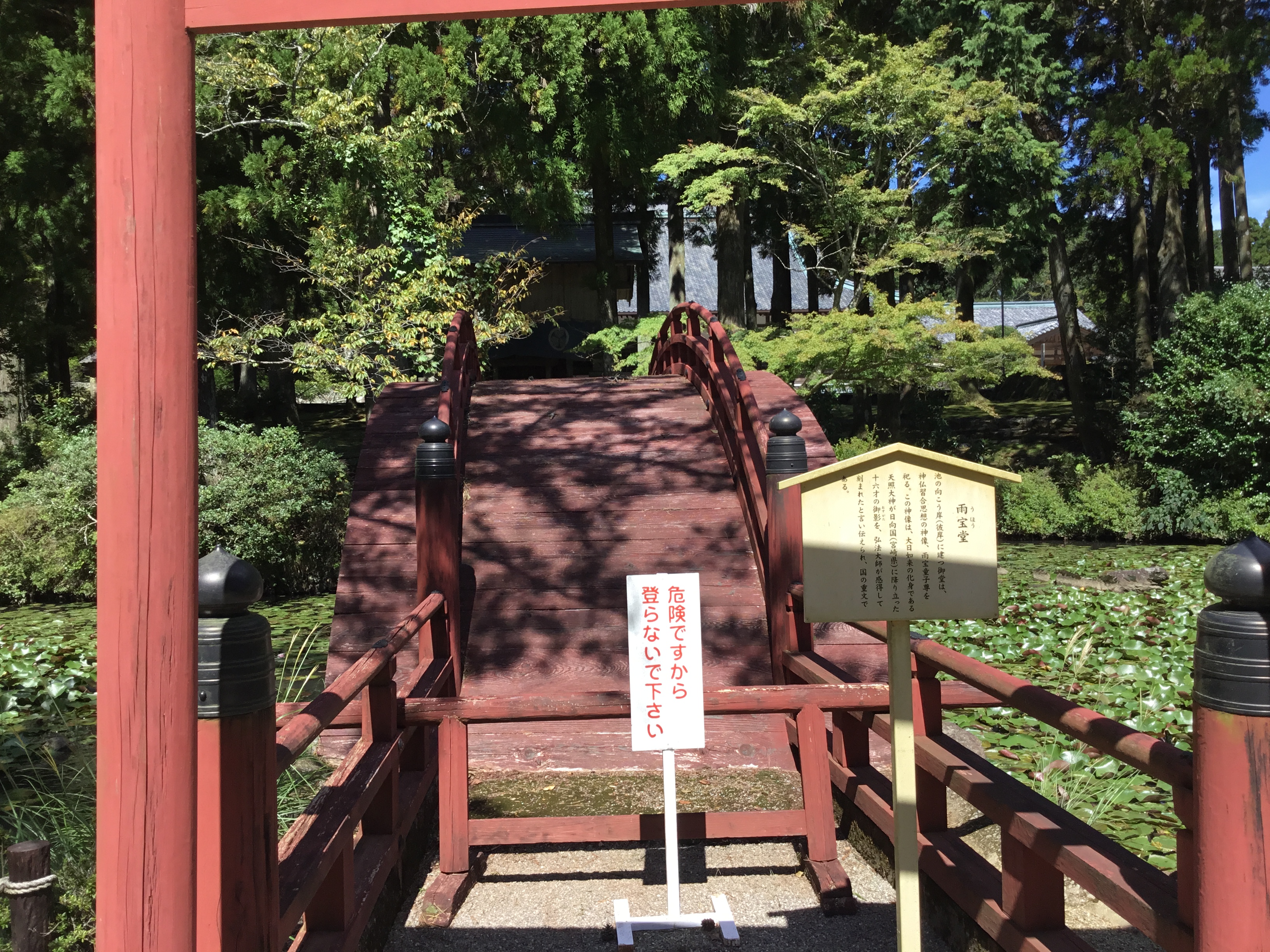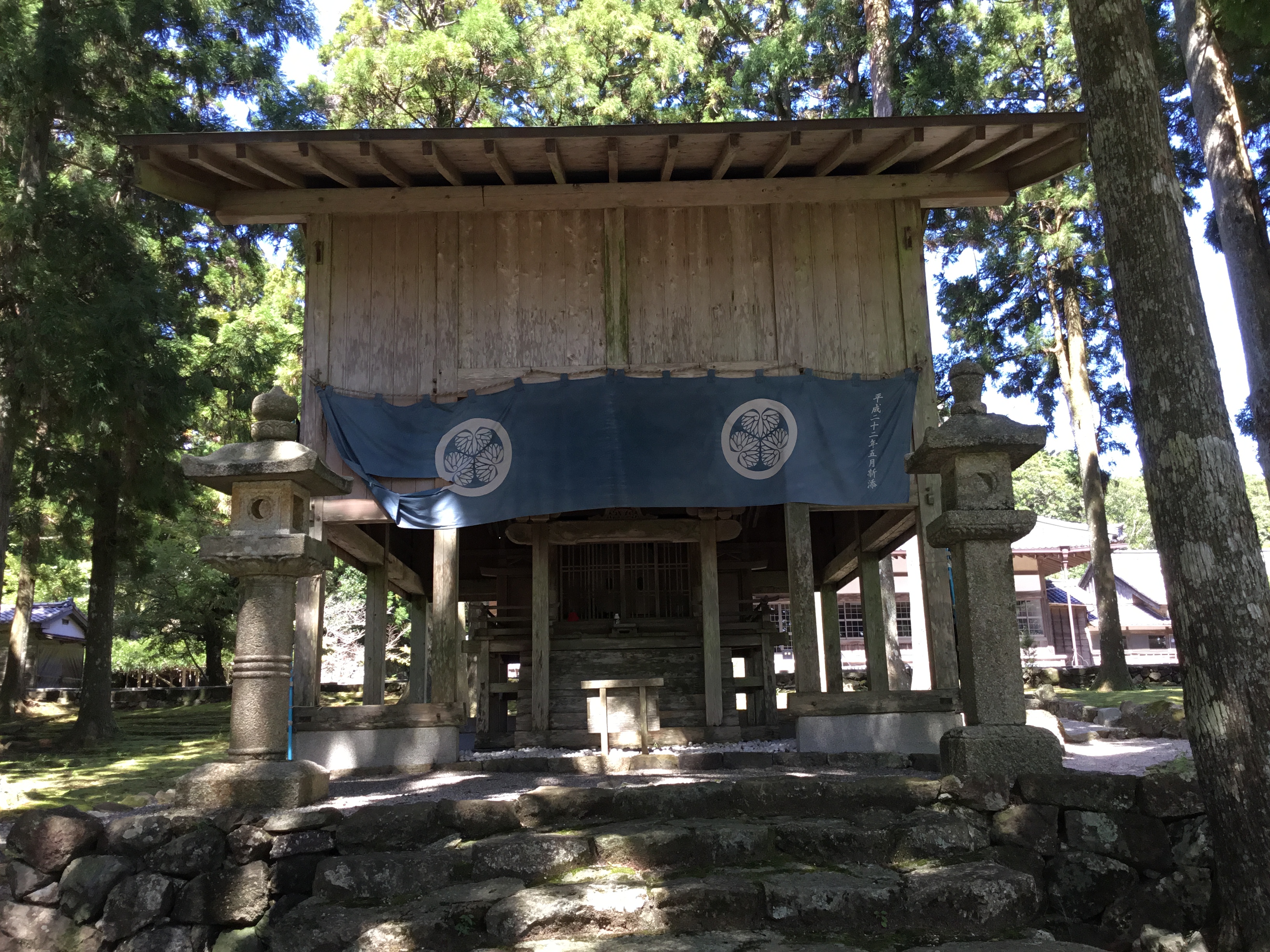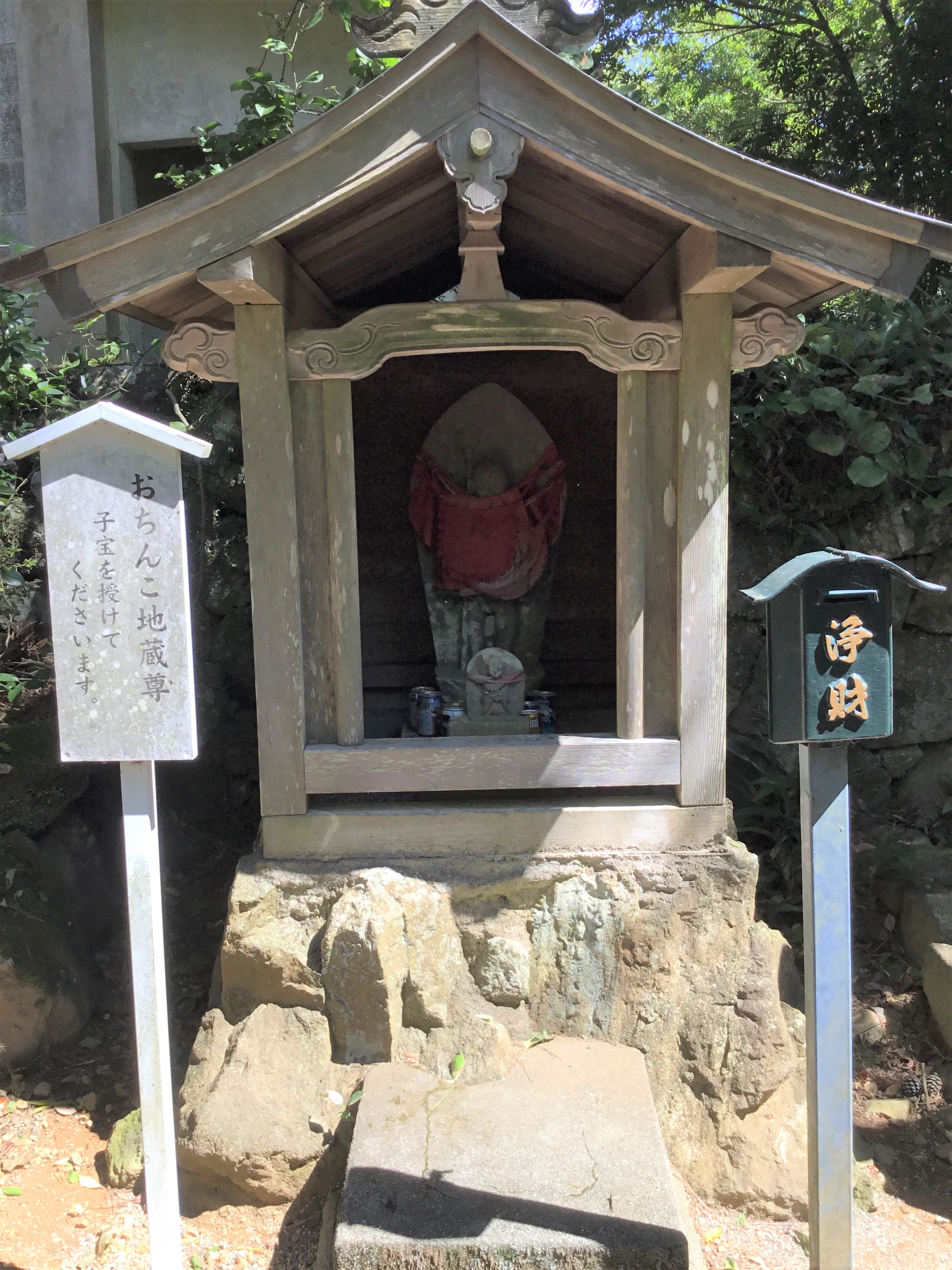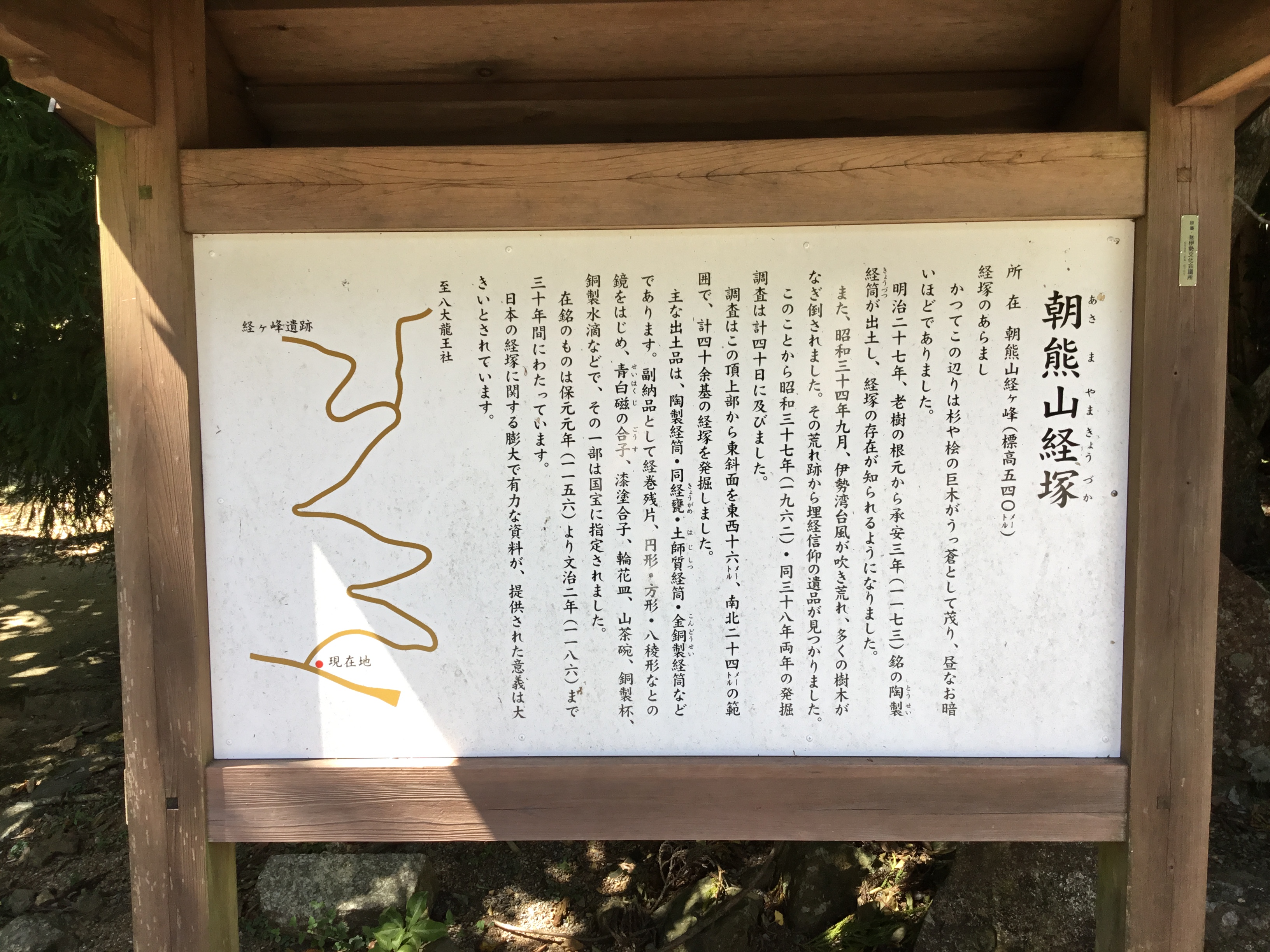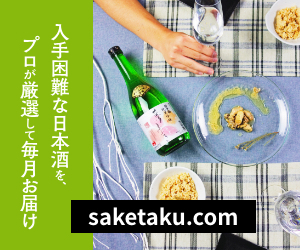- Home
- Report of Delicious Sake Serving Restaurants, My Trip Diary, mie
- Kongo Shoji’s inner shrine in the mountain of faith, and “Ozeki One Cup” at “Takeya”
Kongo Shoji’s inner shrine in the mountain of faith, and “Ozeki One Cup” at “Takeya”
- 2018/10/3
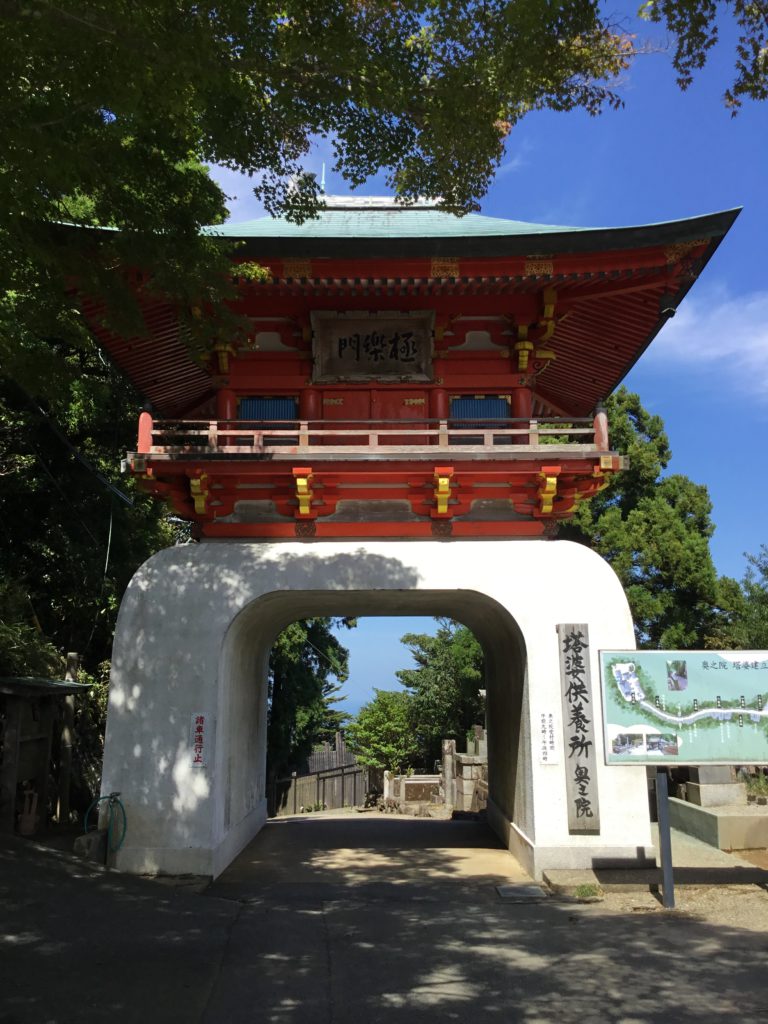
Good evening!
Thank you very much for visiting this blog.
Continued from last blog, today’s about my trip along Ise Shima Skyline.
Contents
Path of Sotoba
The story starts after I enjoyed a beautiful scenery of one of the 100 great landscapes of Japan at the top of Mt. Asama which I stopped by circumstantially.
I went back to my car with my brightened heart to leave for Ise Srine (Ise Jingu), and I found something near my car.
A gate.
I went through it.
Many Sotoba (wooden thin boards with Buddhist scriptures written on them which are made to hold memorial service for departed people) were lining up along the path.
Hmmm……, is it “Yomotsuhirasaka (a hill which connects this world and the other world after death)”?
I kept walking.
There was a monument with a board saying “Kuki Yoshitaka’s Gorinto”.
This path leads to the inner shrine of Kongo Shoji Temple, and those Sotoba were placed for the departed souls to guide them to the heaven.
“Yoshitaka Kiku” is a Daimyo (feudal lord) of Shima no Kuni (a part of the present Mie Prefecture) in the age of civil wars.
He worked as the leader of Nobunaga Oda’s navy in Oda’s time, and he destroyed Mori Suigun Navy who was said to be the strongest in Japan at that time.
In Hideyoshi Toyotomi’s time, he fought against the navy of Rishi Chosen (the present Korea) as the national navy’s leader.
In Battle of Sekigahara, his family broke up in order to make the family of Kuki continue like another famous Daimyo, Sanada.
Yoshitaka joined the west squad led by Mitsunari Ishida, and Yoshitaka’s oldest son, Moritaka, joined the east squad of Ieyasu Tokugawa.
After the battle, Yoshitaka killed himself to make the name of Kuki survive.
One of Yoshitaka’s sons became a priest at Mt. Asama, and he built the Gorinto (gravestone made of 5 pieces piled up) in the photo above to mourn for his father’s soul.
Okunoin, the inner shrine of Kongo Shoji Temple
After I walked further on the path with Sotobea.
I arrived at Okunoin, the inner shrine of Kongo Shoji Temple.
Next to the entrance,
There were more Sotoba, and an explanatory board to explain the history of the Sotoba path.
There is a belief that dead people’s souls gather on this mountain, and the path was made for the memorial service.
The Yoshitaka’s Gorinto was also made after the same belief.
I lost my father the year before, and I had a feeling which I could not explain to come to such a place by chance when I read the board.
Sake of Fujimidai Takeya
Now, over the Sotoba,
There was the main building and (something looked like) a residence.
The middle building in the back is the main shrine, and its principal image is “Enmei Koyasu Jizoson”.
“Jizo” is Buddhist stone images which look over ordinary people such as children and travelers.
I worshipped at the main shrine, and looked at the right side.
There was a rest house.
I was going to ignore it at first because I wanted to get to Ise Shrine as soon as possible, but I remembered that the main purpose of this trip was to research restaurants which serve Nihonshu.
If there is a place serving food and drinks in front of me, I should try it.
I was hesitating to go in, but I encouraged my own heart thinking as if it was a work. (I can do almost anything if it’s job. I know it’s not nice ^^;)
I entered the rest house.
The inside didn’t look as old as the outside appearance.
It had an atmosphere of a rest place at a wild mountain shrine or temple.
I didn’t expect that they had sake in their menu.
I checked the menus on the board just in case.
Yes! I found the words of “Sake One Cup (sake sold in a glass)” in the upper left corner or in the middle of the photo above.
I was surprised and happy to see the unexpected menu, and I looked for which label they had.
Well, I’m not so rich, so I tried hard to find the information watching here and there.
Just watching is free of charge^^;
However, there were not mentioning about the label.
Then, I need to buy it. It was only 300 yen any way.
I looked for a staff to order the sake, and I noticed that there was a lady at the back who was watching “Abarenbo Shogun”, a famous TV drama about a hero samurai.
I said, “Excuse me!” to her.
By the way, my voice often doesn’t reach other people since when I was a child.
When I was playing baseball, the coach always said to me, “Louder!” (well, I’m sure that he could hear my voice a little).
Or, at restaurants or Izakaya as well, I often have to call staffs more than once to get them.
I called her some times, and finally she noticed me.
I ordered a one cup sake, and she brought it to me.

It was “Ozeki ONE Cup (Josen)”.
I was relieved to have a sake because this blog would be suitable for the website.
Suddenly, the lady asked me where I was from, and we started to chat.
She said that she was 88 years old, and she was running the rest place alone after her husband passed away.
Our conversation went on, and
She treated me some sweets and green tea.
I felt bad because I only payed 300 yen, so I looked for something nice to order.
I found a menu “Special Oden (hot pot dish of vegetables, fish dumplings, and other ingredients with soy sauce and dashi – based soup)”.
I was interested in it, but unfortunately, “Oden” was not available until the end of October.
I took a window seat and enjoyed the tea, sweets, and the view.
It was a nice meeting with the lady!
Ikkyu and Fujimitei
By the way, there was a guide board beside the shop.
On the board, there were a “Haiku” (Japanese traditional poems expressed with 5-7-5 letters. It says “The snow of Mt. Fuji, it is a Chanoko Mochi that is drinking sea – Ikkyu Zenji”), and a word of “Ikkyu Zenji”.
The Haiku was about the beautiful view of the ocean and Mt. Fuji which Ikkyu Zenji saw at this place.
“Ikkyu Zenji” should be that famous little monk, “Ikkyu san”, who is famous for his quick wit. Hmmm…, it’s interesting that Ikkyu-san was here….
…… Wait, “Haiku” should have not been born yet in the time of Ikkyu-san…??
The famous phrases which was made by Ikkyu-san are;
“Happy Kadomatsu (ornaments to celebrate the New Year’s Day) is a milestone to death – Happy or not Happy?”
“Wake up, go to toilet, sleep, and eat. Life goes in that way and I just wait for death”
His poems often described the world precisely with sarcasms in “Waka (poems of 5-7-5-7-7- letters)” style.
In his times, there was also another poem style called “Renga (poems written by more than 1 person. A person made the first 5-7-5 part, and the other made the latter 7-7 part)”.
So there is some possibility that he makes a poem with only 5-7-5 letters.
Well, his poems are – how can I say – unromantic^^;
Now, as the first Haiku and the guide board say, Mt. Fuji can be seen from the restaurant on sunny days.
The name of the shop is “Fujimitei Takeya”, and the view of Mt. Fuji should be the reason of the naming.
I got to know from the Internet article later that they have a special souvenir called “Chanoko Mochi (Chanoko Rice-Cake)” which was also mentioned in the guide board.
It is sold only in the 3 days of “Kaisanki” which is to celebrate the founder of Kongo Shoji Temple. (I think this article should help you as well.)
Kongo Shoji Temple
I recovered with the tea and sweets, and I left this “Takeya” promising the lady that I will visit there again.
I could go straight to Ise, but I chose to visit Kongo Shoji Temple which was just next to the rest house.
This is the appearance.
The board below is the guide board under Niomon Gate at the entrance.
It was showing the brief history of the temple.
There were more details about it in Wikipedia.
According to it, it was established by Emperor Kinmei’s order in the middle of the 6th century. Later, in 825, Kukai, who is a priest in the early Heian period, restored the temple, and Togaku Bun-iku, who was also a monk, retrieved it again in 1392.
Please remember that there was a Gorinto of Yoshitaka Kuki on the way to the inner shrine. The portrait of Yoshitaka which we usually see is owned by this temple.
As I mentioned in the last blog, this Kongo Shoji Temple locates in the “Kimon” direction (the northeast, the direction of demons) of Ise Shrine, so this temple was believed to be the block of “Kimon”.
It got combined with the belief of Ise Shrine, and many people visited this temple as an old phrase of “If you visit Ise Shrine, you must visit Mt. Asama, too. If you don’t, it’s still a half way.”
Because of such back ground, it received the support of Tokugawa.
Therefore, Kongo Shoji is a big temple and there are many things interesting.
For example, in front of the board above,
There were “Ox” and “Tiger”.
I couldn’t see what they meant when I was there, but now I understand it writing this blog.
“Ox”, “Ushi” in Japanese, also means “north-northeast”,
“Tiger”, “Tora”, means “northeast-east”,
“Ushi-Tora” means “northeast”, that means “Kimon (demon’s gate, northeast)”.
I think that those animals mean that the temple protects Ise Shrine from the demon’s direction. (However, the temple is almost due east seeing Google Maps… ^^;)
The ox was called “Lucky Ox” and the tiger was “Tiger of Wisdom”, and if you pat them, you can get good luck and wisdom.
By the way, the object on the ox’s head is “Daikokuten (the god of wealth)”.
Of course, I patted them like Mr. Mutsugoro (a Japanese student of zoology who is famous for his way of touching animals)……, or not.
Architectures of Kongo Shoji Temple
The next examples are “Tsurema no Ike (Tsurema Pond)” and “Renju Bashi (Renju Bridge)”.
This place mean that the land over the bridge is “Higan (the world of enlightenment)”, and this side is “Shigan (this world, the world with evil passions)”.
Inside the building over the bridge, there is a statue of a god called “Ubo Doji Son”.
The priest, Kukai, created it after his imagination of “Ubo Doji” as a different appearance of a god “Amaterasu Omikami” of the age of 16.
I hoped to cross the bridge to the land of “Higan”, to get out of this world of suffering and pain every day, but –
No people were allowed to walk on it because it was not safe.
Or, it could be because the person can depart for “that” world if he/she cross the bridge^^
Well, the visitors can’t walk on the bridge, but they can go to “Higan” land.
There was a building called “Uho-dou” and you can worship.
There were patterns of “Aoi (mallow)”, which is the family crest of Shogun, the Tokugawas. I could see that it was supported by the Tokugawa Shogunate from those appearance.
When I looked around with that point of view, the main shrine which appeared earlier, and
This Niomon Gate looked like “Gongen Zukuri” which is one of styles of architectures which is often seen in Tokugawa-related buildings made in the early Edo period.
By the way, there is another “Jizo” like this below.
This is called “Willy Jizo”. It’s said to bring children to the visitors.
I’m single, so I visited the Jizo, too.
To have children, the Jizo might bring me a good partner….
Conclusion
After walking further,
There was a gate of another trail.
This trail leads to another shrine and a place called “Kyozuka”.
“Kyozuka” is a place where a practice called “Maikyo”, which is to bury scriptures under the ground and to build mounds on the ground for the repose of the departed souls, was held in the Heian period.
I was interested in it, but the time was already 1 o’clock, and I thought that it would be around 2 if I climbed up the mountain to the mound and come back.
I gave it up, and went back to my car and left Mt. Asama.
This visit to Mt. Asama and Kongo Shoji was not planned, and I went there without any prior study.
However, it ended up a great time with a fantastic view of 100 landscapes of Japan, interesting religious cultures since ancient times, the nice lady at the rest place, and my memory of my father who passed away.
I felt that Mt. Asama is really a spiritual place that the departed souls, including my father, come together.
It's our great pleasure if this article is helpful for you.
Restaurant Information
| Shop Name | |
|---|---|
| Prefectures | - |
| Tel | |
| Address | |
| Nearest Station | |
| Homepage | - |
| Business Hours | - |
| Holiday | |
| Introduction | |
| Sake List |
|

